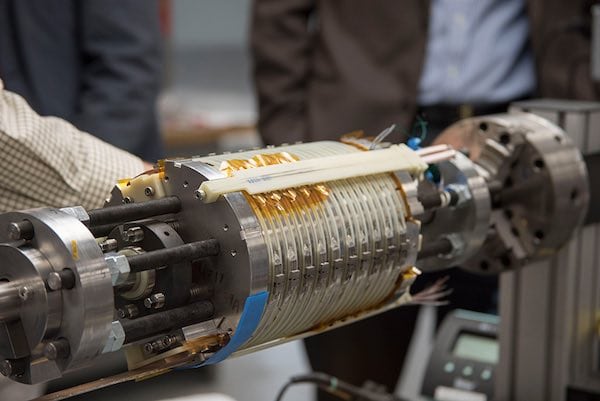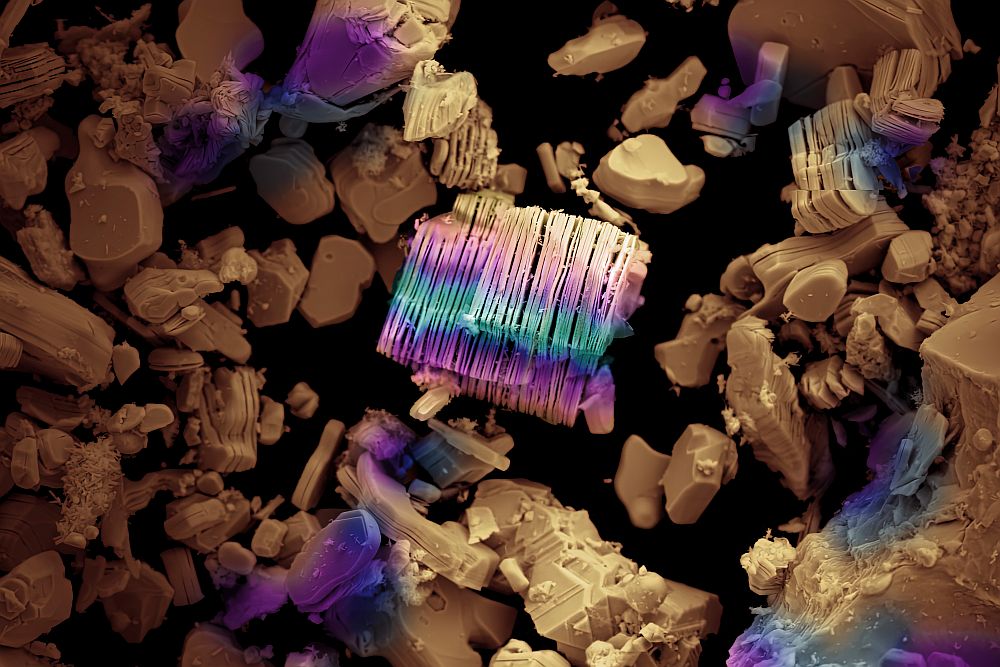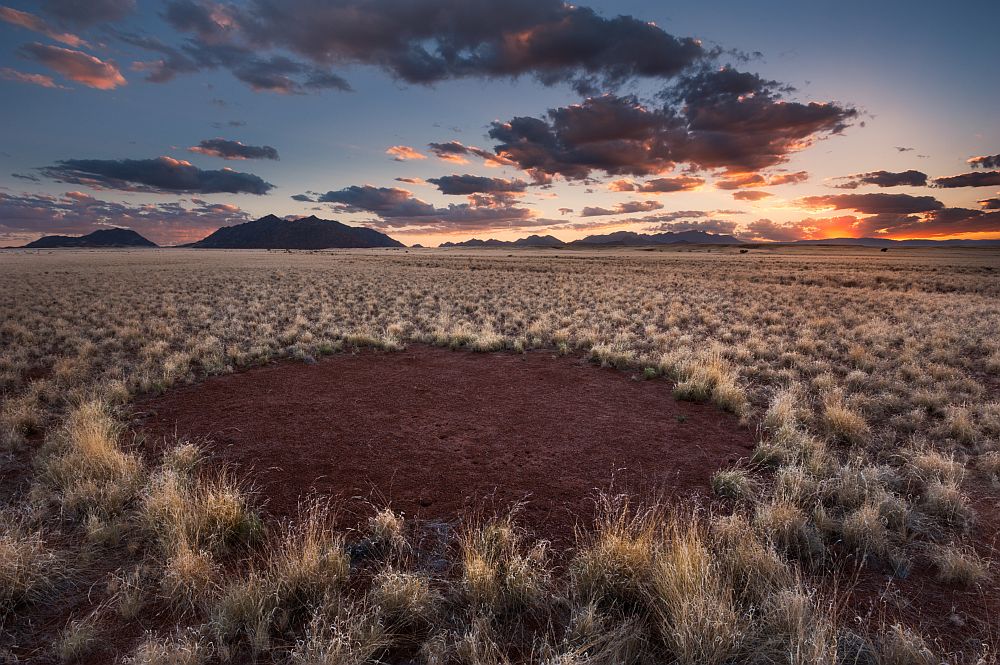
[Image above] The National High Magnetic Field Laboratory has shattered a world record with the testing of a 32-Tesla magnet. Credit: National MagLab
The National High Magnetic Field Laboratory at Florida State University (Tallahassee, Fla.) has used high-temperature superconducting ceramic materials to set a new world record for the strongest superconducting magnet.
With a field strength of a whopping 32 tesla, the new magnet is 33% stronger than the previous record holder, which had a field strength of 23.5 tesla.
“This is a transformational step in magnet technology, a true revolution in the making,” MagLab Director Greg Boebinger says in an FSU news release. “Not only will this state-of-the-art magnet design allow us to offer new experimental techniques here at the lab, but it will boost the power of other scientific tools such as X-rays and neutron scattering around the world.”
While there are magnets in existence that are stronger than 32 tesla, the new 32 tesla magnet is the most powerful superconducting magnet, which is steadier and generates less noise than other types of magnets (e.g., resistive magnets). And a steadier, quieter magnet is important for experiments that require sensitive measurements.
According to MagLab, “Due in large part to the quieter environment a superconducting magnet offers over a resistive magnet of equivalent strength, the 32 tesla will help scientists break new ground in nuclear magnetic resonance, electron magnetic resonance, molecular solids, quantum oscillation studies of complex metals, fractional quantum Hall effect, and other areas.”
Superconducting materials can do what they do because they conduct electrical current without resistance. Resistance equates to wasted energy, usually as heat.
But although superconducting magnets conduct sans resistance, they do require really cold temperatures for the superconducting properties to emerge—usually at a frigid <30K. Plus, many lose their superconducting properties in magnetic fields stronger than 25 tesla.
But, there are certain superconducting materials that take the “super” to a whole new level.
These so-called high-temperature superconductors maintain their superconducting properties at much higher temperatures and even in the presence of high magnetic fields.
Of course, high-temperature is relative here—high-temperature superconductors have been characterized that maintain their properties at temperatures as high as 138K, which is equivalent to about –135ºC. Still pretty darn cold.
The new record-breaking magnet combines conventional and high-temperature superconductors together to achieve the 32 tesla system. And it’s the first superconducting magnet system available for researcher use to incorporate YBCO, a high-temperature superconducting ceramic composed of yttrium, barium, copper, and oxygen. That’s a big deal.
That’s because YBCO turns out to be a bit of a finicky material to work with. So MagLab scientists collaborated with SuperPower Inc. (Schenectady, N.Y.) to develop a way to incorporate YBCO into the powerful superconducting magnet, which required fashioning the material into thin tapes, wrapped into coils. And the team had to develop unique solutions to insulate, reinforce, and de-energize the system.
The magnet altogether consists of about six miles of YBCO tape coiled into 112 flat discs, which are stacked into two YBCO coils that form the inner portion of the magnet system. Those YBCO coils are nestled within a housing containing conventional low-temperature superconducting materials—three coils of niobium-tin and two coils of niobium-titanium.

The guts: The 32 T’s two high-temperature superconducting coils before being integrated with the low-temperature outer magnet. Credit: National MagLab
In total, the super system weighs some 2.3 tons and operates in a chilly bath of liquid helium.
But despite the amazing power of the new superconducting magnet, the MagLab team doesn’t plan to stop at a measly 32 tesla.
“We’ve opened up an enormous new realm,” MagLab scientist Huub Weijers says in the release. “I don’t know what that limit is, but it’s beyond 100 tesla. The required materials exist. It’s just technology and dollars that are between us and 100 tesla.”
MagLab scientists have published much of their research in various reports and publications. See the MagLab publications page for additional information.
Did you find this article interesting? Subscribe to the Ceramic Tech Today newsletter to continue to read more articles about the latest news in the ceramic and glass industry! Visit this link to get started.
Author
April Gocha
CTT Categories
- Basic Science
- Energy
Related Posts
‘Fairy circles’ may help mark natural underground hydrogen deposits
September 18, 2025


